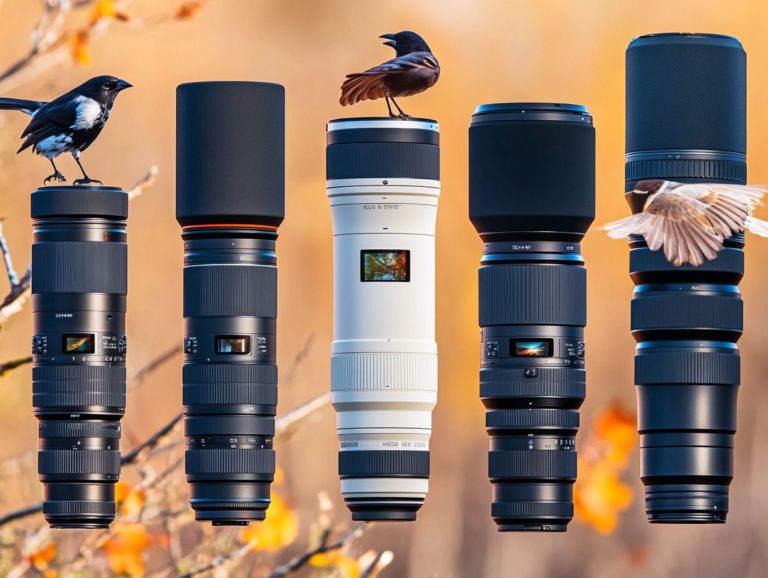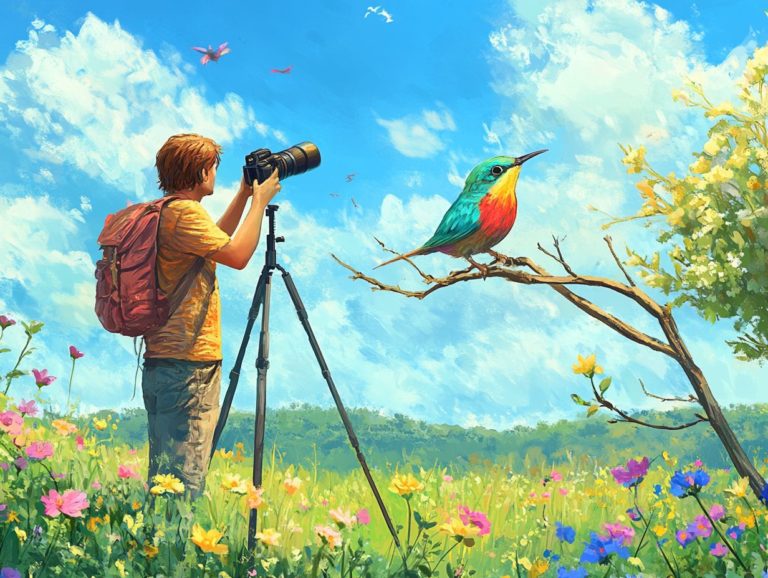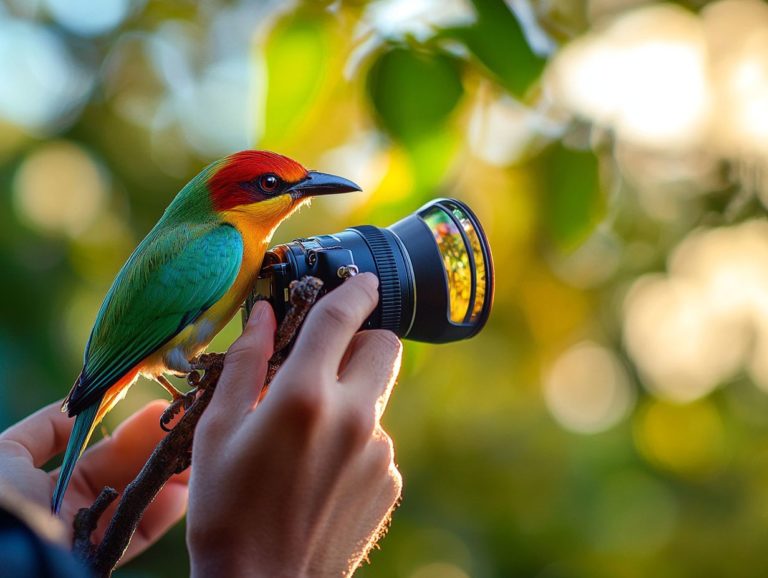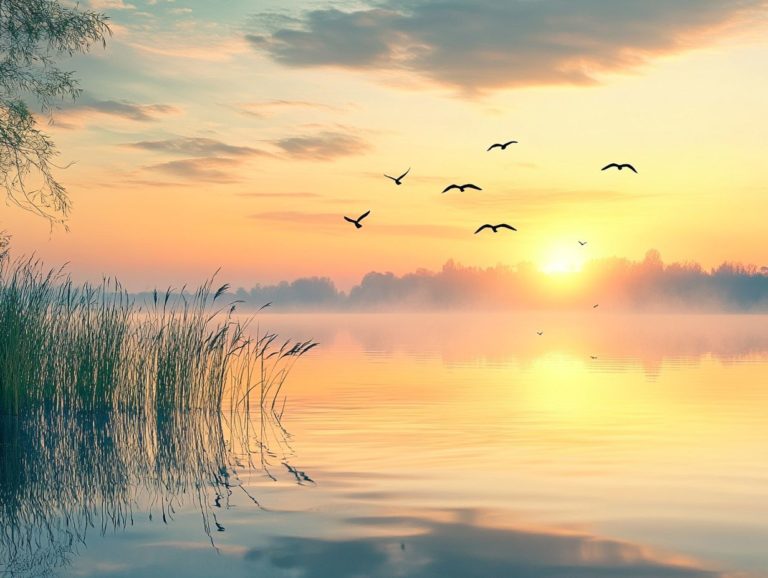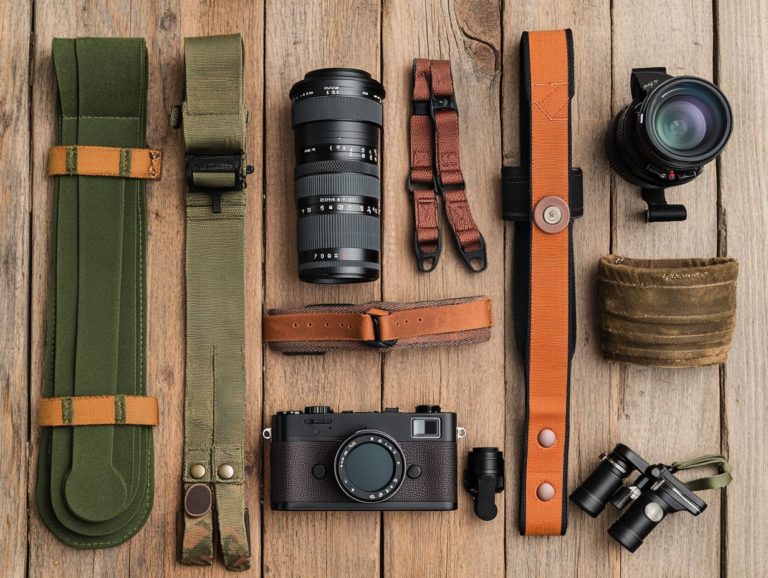Preparing for a Bird Photography Outing
Bird photography is an exciting adventure that combines your love for nature with thrilling moments. This guide delves into the essential gear you’ll need, from selecting the ideal camera and long-range lens to identifying must-have accessories that ensure optimal results.
Choosing the right location and preparing meticulously are fundamental aspects of this pursuit. Mastering techniques for breathtaking shots will enhance your bird photography experience.
With insights on cultivating patience and respecting wildlife, you’ll be fully equipped for a rewarding bird photography adventure.
Contents
- Key Takeaways:
- Essential Gear for Bird Photography
- Choosing the Right Location
- Preparing for the Outing
- Techniques for Capturing Great Shots
- Tips for a Successful Bird Photography Outing
- Frequently Asked Questions
- What equipment do I need to bring for a bird photography outing?
- How can I prepare for different lighting conditions during a bird photography outing?
- Do I need to research the location beforehand?
- What type of clothing should I wear for a bird photography outing?
- How can I get closer to the birds without disturbing them?
- What are some safety precautions to keep in mind during a bird photography outing?
Key Takeaways:
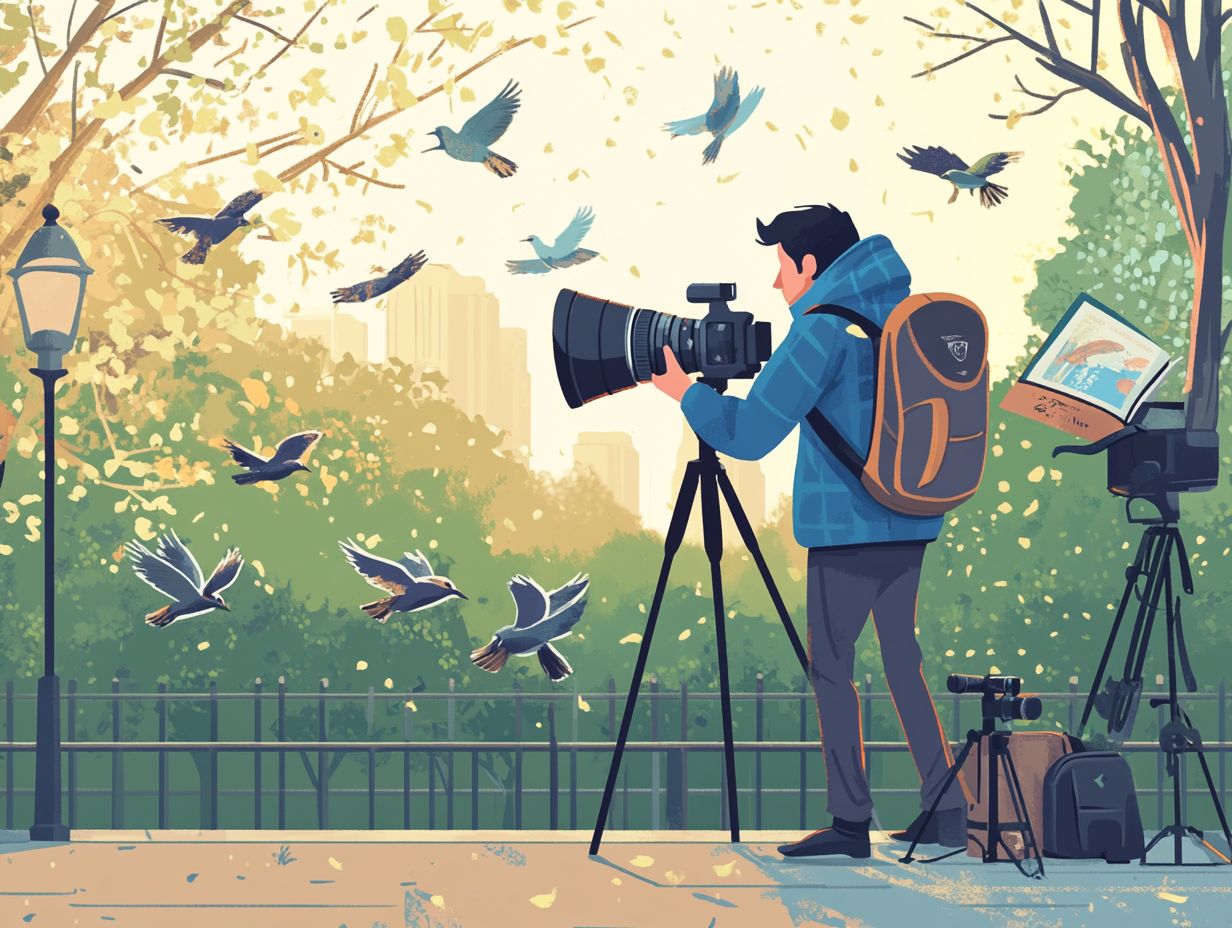
Essential Gear for Bird Photography
Bird photography, a unique niche within wildlife photography, demands specific gear to elevate your experience during every outing. Selecting the right camera equipment is paramount consider DSLRs such as the Nikon Z9, Canon EOS R3, or Fujifilm X-H2, paired with long-range lenses that capture avian subjects beautifully.
Investing in quality wildlife gear, including sturdy tripods, can significantly enhance your shooting experience. This allows you to focus on capturing breathtaking moments in nature.
Camera and Lens Selection
When choosing a camera and lens for bird photography, selecting the right long-range lens is crucial for effectively capturing distant wildlife. Models like the Nikon Z9, Canon EOS R3, and Fujifilm X-H2 are top picks for wildlife photographers.
These cameras offer impressive autofocus accuracy and speed, essential for catching fast-moving subjects like birds in flight. The Nikon Z9, for instance, boasts a remarkable 20 frames per second shooting capability, so you never miss the perfect moment!
Canon’s EOS R3 shines with its eye-tracking feature, effortlessly locking focus on a bird’s eye essential for creating striking, impactful shots. When selecting lenses, don’t overlook the opening in the lens that controls light, as it greatly affects image quality.
A wider opening enhances low-light performance and creates beautiful background blur, making your subject stand out. Practicing panning techniques and incorporating image stabilization can significantly boost overall image clarity while you’re in the field.
Accessories for Optimal Results
To achieve optimal results in bird photography, utilize essential camera accessories, such as high-quality tripods to ensure stability and precise composition. Reliable memory cards, a battery charger, and backup batteries are crucial so you’re always prepared for fleeting moments in the field.
Equipping yourself with a sturdy tripod will dramatically enhance the sharpness of your images, especially in low-light conditions or when using longer lenses. High-write-speed memory cards are essential for capturing rapid sequences without missing a beat.
Managing your battery life, including carrying a portable charger, can save you from unexpected disruptions during critical moments. Camouflage clothing can help you blend into the environment, increasing your chances of a successful shot.
Familiarizing yourself with these accessories not only maximizes your potential for stunning bird photography but also enriches your overall shooting experience. Now that you’re equipped with these tips, consider exploring techniques for photographing birds in flight before you grab your gear and head out for an unforgettable bird photography journey!
Choosing the Right Location
Selecting the perfect location for bird photography is crucial for an enjoyable trip and capturing amazing photos. Look for places rich in wildlife diversity, such as wetlands, forests, and coastal regions.
These environments provide plentiful birdwatching opportunities, connecting you to nature and allowing you to capture avian beauty in its natural habitat.
Factors to Consider
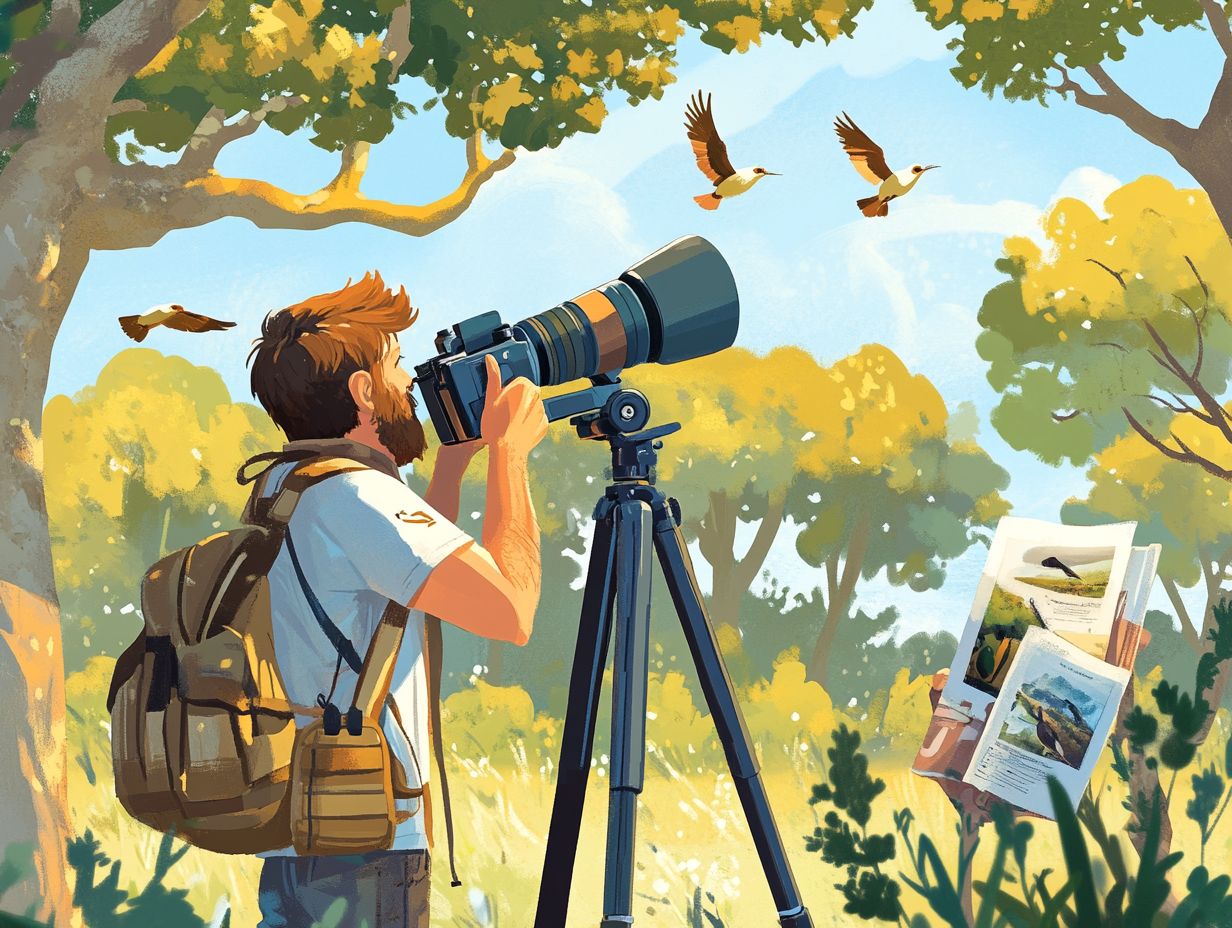
When picking a location for bird photography, consider several factors that can elevate your experience. Look at specific wildlife habitats, the time of year, and the presence of nature sounds that attract various bird species and affect their behavior.
Understanding habitat preferences is essential; some birds thrive in wetlands, while others prefer woodlands or shorelines. Seasonal changes, like migratory patterns and breeding seasons, offer unique chances for capturing stunning images.
Pay attention to weather conditions, including light angles and cloud cover, which can greatly enhance your photos. Locations with minimal human disturbance usually provide better birdwatching and photography opportunities, allowing you to capture candid moments.
Think carefully about these factors to boost your chances of getting that perfect shot of these beautiful creatures in their natural environment.
Preparing for the Outing
Getting ready for a bird photography outing takes careful research and organization to ensure a rewarding experience. Familiarize yourself with the wildlife habitats you’ll explore and the species you might see. Additionally, consider these tips for photographing rare bird species as you assemble the right outdoor clothing and photography gear to set the stage for an enjoyable trip.
Every detail counts, helping you capture the beauty of nature at its finest.
Researching the Birds and Their Behavior
Researching birds and their behavior is key to a successful outing. Dive into their movements and interactions in their habitats to anticipate when and where they are most active. Understanding the basics of bird photography composition helps you position yourself strategically for the best lighting and angles, increasing your chances of those breathtaking shots.
Observe how different species respond to environmental factors, like weather changes, to time your photography pursuits effectively. Learning their calls can also help you spot elusive birds, ensuring you don t miss any potential masterpieces on your adventure.
Packing and Organizing Equipment
Packing your photography gear is vital for a successful outing. A well-designed photo backpack helps you store and transport your camera equipment efficiently, allowing easy access to your gear when that perfect shot appears.
Consider adding padded dividers in your backpack to keep your lenses, tripods, and accessories organized and protected.
Labeling pouches for items like memory cards and batteries saves you time, letting you focus on what matters: the photography.
Prioritize essentials like a telephoto lens (a lens that allows you to take close-up photos from a distance) and a sturdy monopod for capturing stunning images without unnecessary weight.
Make sure your backpack has compartments for hydration and snacks to stay energized while enjoying nature and waiting for that perfect moment.
Techniques for Capturing Great Shots
Mastering exceptional shots is vital for you as a wildlife photographer, especially in bird photography. Use effective photography tips, understand camera settings, and apply specialized shooting techniques for avian subjects to significantly enhance your ability to create breathtaking images.
Start planning your next bird photography adventure today!
Composition and Framing
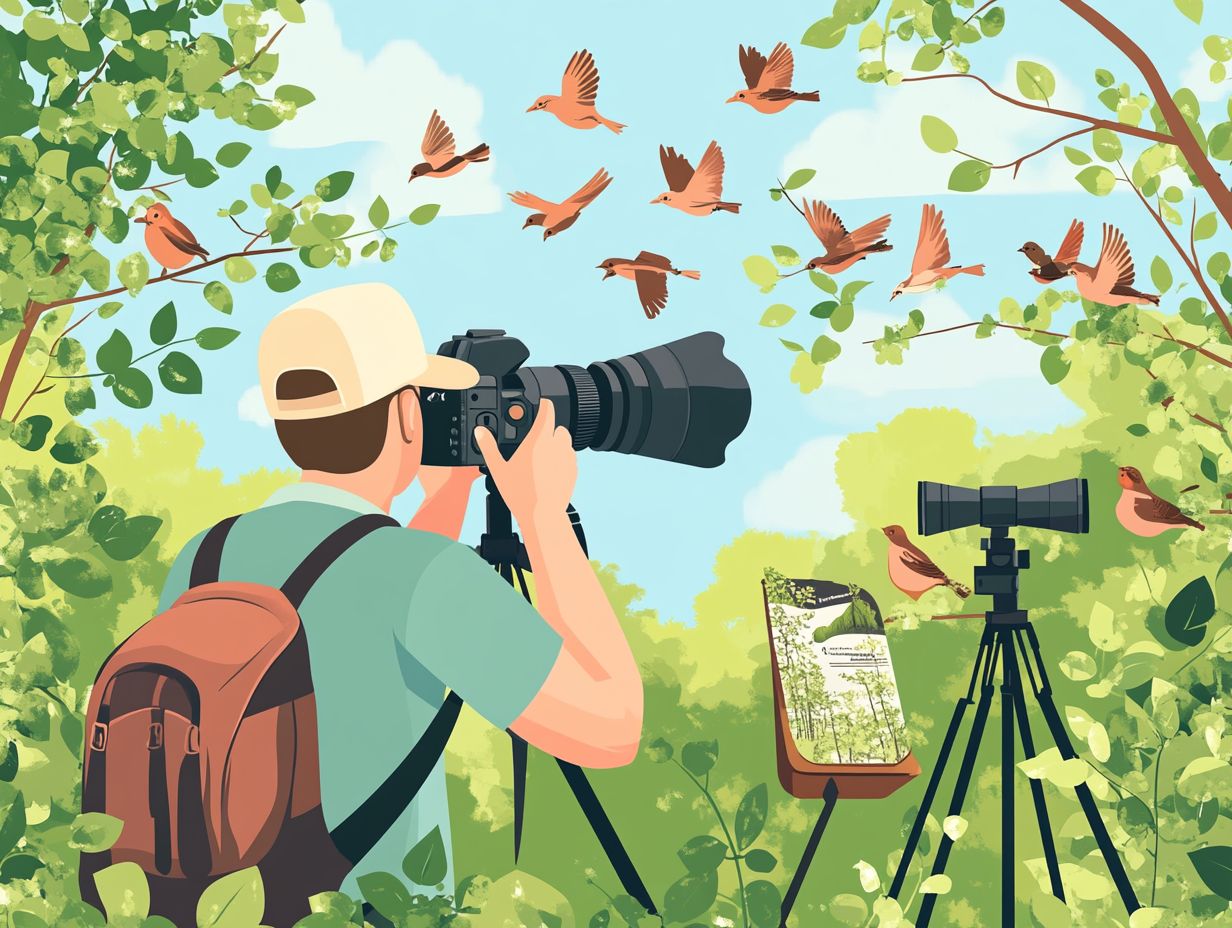
Effective composition and framing are essential for capturing the essence of wildlife photography, especially with birds. By employing techniques like the rule of thirds and leading lines, you can guide the viewer’s eye. This enhances visual storytelling and results in more captivating images.
To elevate your narrative even further, consider the strategic use of negative space. This technique can create a sense of isolation or context, allowing your subject to breathe within the frame. Incorporating foreground elements adds depth and dimension, drawing the viewer’s attention directly to the main subject.
Utilizing natural light, particularly during the golden hour, enhances textures and colors. It vividly portrays the animal’s environment. By being mindful of your perspective and angle, you can evoke emotion and intrigue, transforming an ordinary snapshot into a striking visual story that resonates with your audience.
Camera Settings and Shooting Modes
Understanding camera settings and shooting modes is crucial for achieving optimal performance in bird photography. This is particularly important when you’re trying to capture swift-moving subjects. By mastering settings like shutter speed, aperture, and ISO, you can significantly enhance your ability to freeze action and create stunning images.
For example, adjusting the speed at which your camera takes a picture to at least 1/1000th of a second can effectively freeze a bird in flight. Pairing that with a wider aperture, such as f/4 or f/5.6, will beautifully blur the background, drawing attention to your subject.
In terms of the camera’s sensitivity to light, it s essential to tweak it based on lighting conditions especially in low light to strike a balance between noise and exposure.
Don t underestimate the importance of auto-focus settings; using continuous autofocus is vital to keep your moving subjects sharp. Consider using different shooting modes like burst mode, which is invaluable for capturing rapid sequences perfect for those moments when birds take flight or engage in captivating courtship displays.
Tips for a Successful Bird Photography Outing
A successful bird photography outing relies on a delicate balance of patience, persistence, and a profound respect for the birds and their natural habitat. Additionally, having the right techniques can elevate your experience, especially when conditions are tough, so be sure to check out these tips for photographing birds in bad weather.
By embracing photography tips that emphasize an understanding of avian behavior and the importance of maintaining a respectful distance, you significantly increase your chances of capturing breathtaking images.
Patience and Persistence
In bird photography, patience and persistence are essential traits you must cultivate to achieve success as a wildlife photographer. Waiting for that magical moment to capture a bird in its natural habitat can yield extraordinary results, revealing the beauty and behavior of these creatures in ways that truly resonate.
Imagine yourself as a photographer, spending hours quietly nestled in a camouflaged spot, keenly observing the intricate courtship dance of male peacocks. Such dedication often involves braving the unpredictable elements of nature. However, the stunning images you capture during those fleeting moments of brilliance make every second worthwhile.
Consider the pursuit of migratory birds; you may find yourself returning to the same location day after day. This ritual deepens your familiarity with local species and fosters a profound connection with the environment. Ultimately, this dedication leads to breathtaking photographs that tell a compelling story of avian life, echoing the beauty of nature itself.
Don t miss your chance to capture breathtaking moments by being prepared and tuned in! Grab your camera, find a beautiful spot, and start capturing the beauty of birds today!
Respecting the Birds and Their Environment
Respecting birds and their environment is an ethical obligation for wildlife photographers. This commitment ensures the safety and well-being of your avian subjects while deepening your connection with nature.
By understanding bird habitats and practicing responsible photography, you can elevate your wildlife expeditions. You’ll capture stunning images and help safeguard ecosystems threatened by human activity.
Equip yourself with the right gear. Telephoto lenses allow for close-ups without disturbing nests.
Research specific habitats and avoid sensitive areas during nesting seasons. This gives birds the space they need to thrive.
Engaging with local conservation groups enhances your understanding of best practices. This fosters appreciation for the delicate balance required in ethical wildlife photography.
Frequently Asked Questions
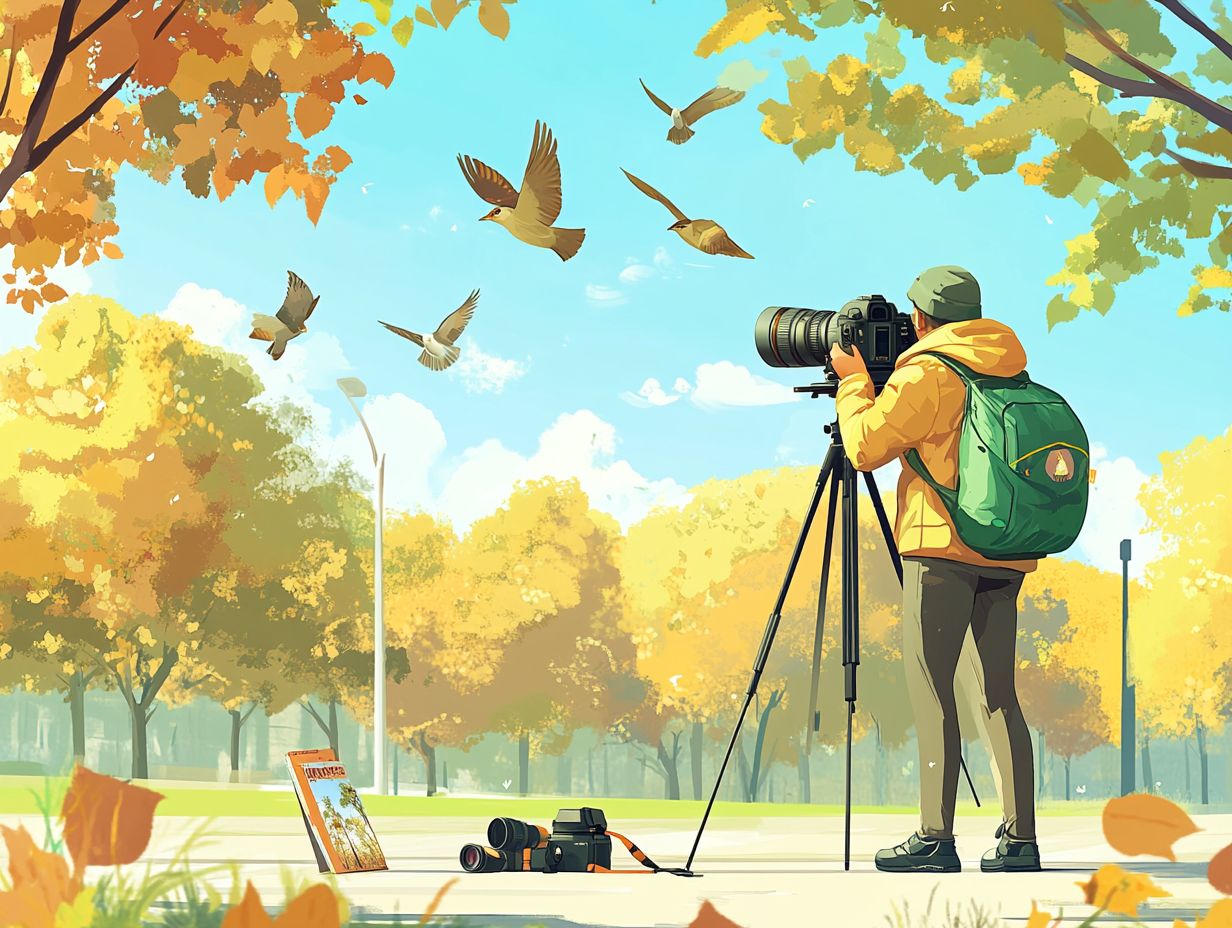
What equipment do I need to bring for a bird photography outing?
Bring your DSLR or mirrorless camera with a telephoto lens (at least 300mm). A sturdy tripod, extra batteries, memory cards, and a lens hood are also essential.
How can I prepare for different lighting conditions during a bird photography outing?
Pack various lens filters for different lighting scenarios. A polarizing filter can reduce glare, while a neutral density filter captures motion blur in flight shots.
Do I need to research the location beforehand?
Yes, researching the location helps you understand the types of birds and their behaviors. This knowledge makes it easier to anticipate their movements for better shots.
What type of clothing should I wear for a bird photography outing?
Avoid bright colors. Wear neutral or camouflage clothing to blend in with your surroundings, and ensure comfort for long periods.
How can I get closer to the birds without disturbing them?
Use natural cover like bushes or trees. A camouflaged blind helps you blend in and get closer for better shots.
What are some safety precautions to keep in mind during a bird photography outing?
Stay aware of your surroundings and avoid disturbing birds or their habitats. Dress appropriately for the weather and carry supplies like insect repellent and a first aid kit.
We invite you to share your experiences or tips in the comments below!


